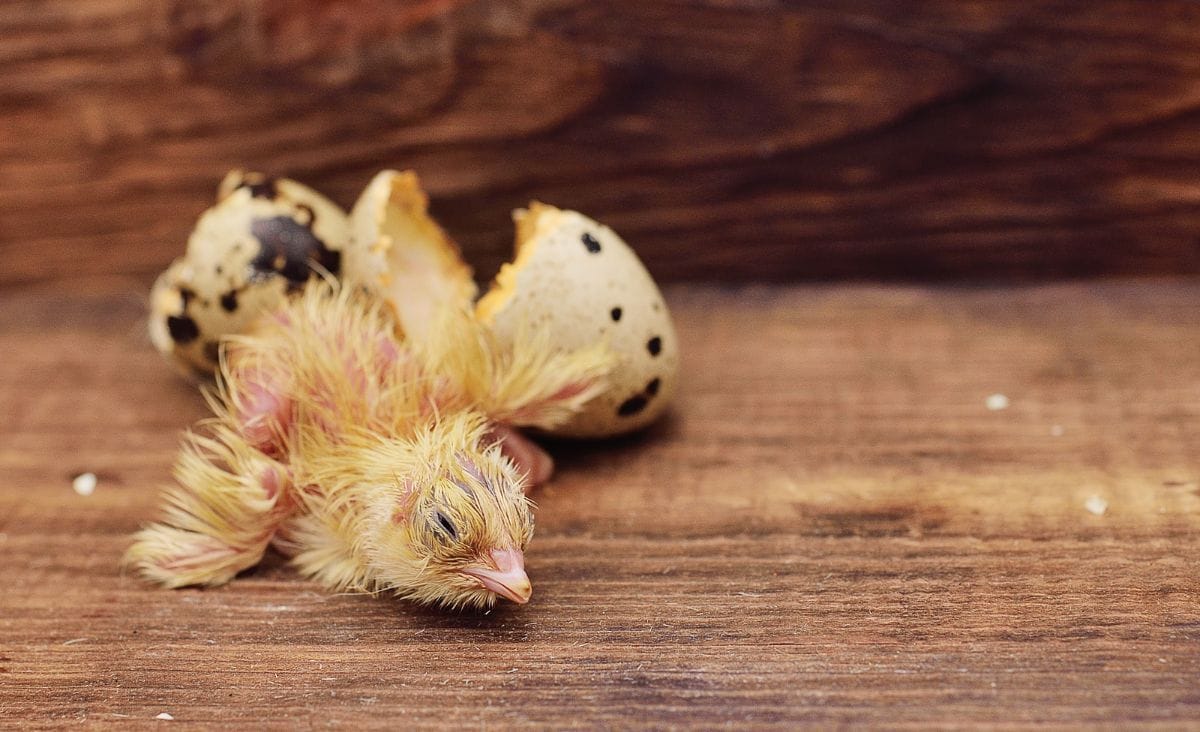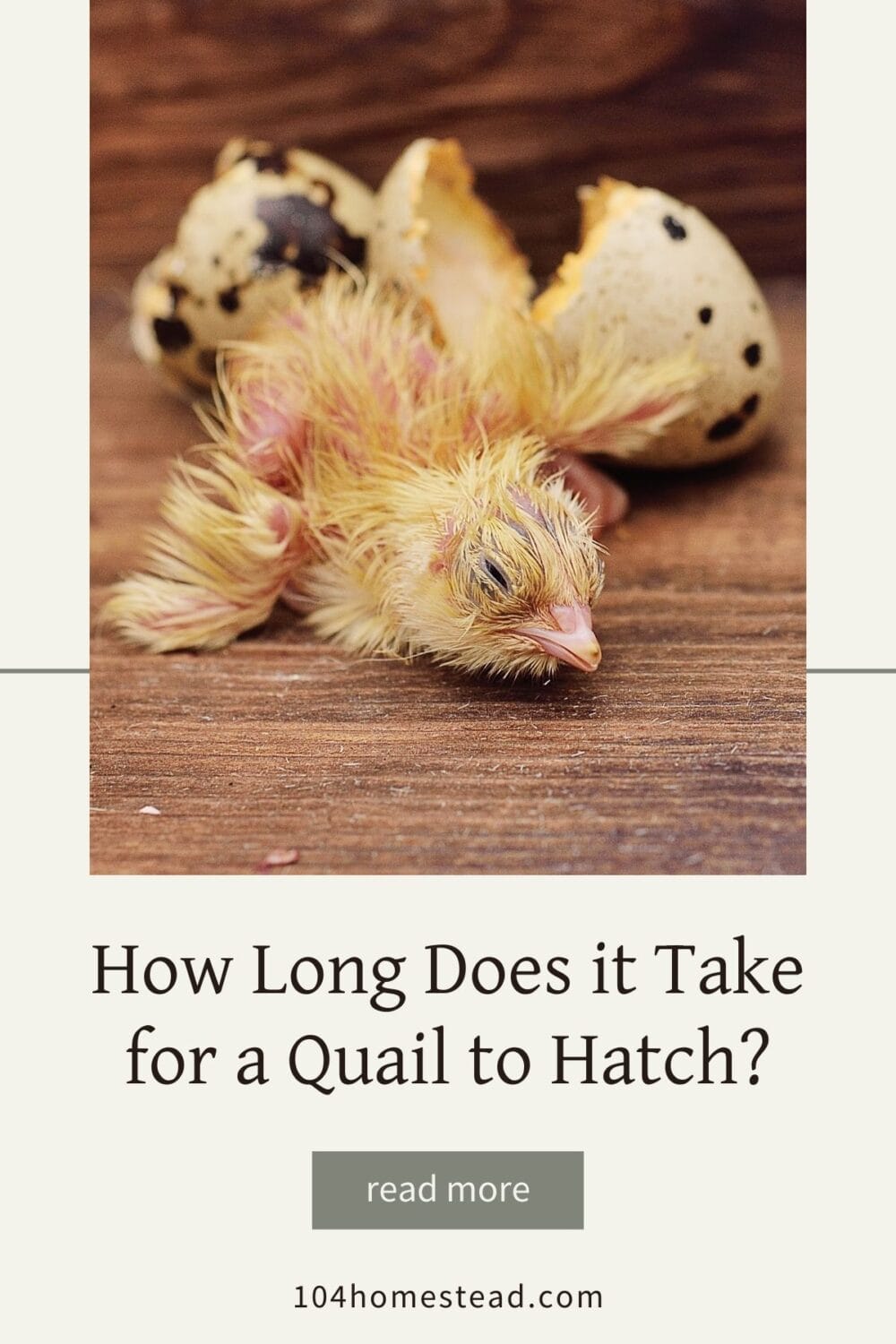Egg to Chick: How Long Does the Quail Hatching Process Take?
Timelines, tips, and FAQs on hatching Coturnix quail: discover how long it takes for quail to hatch on your homestead.

The incubation period for eggs laid by Coturnix quail is typically between 17 and 18 days. However, there may be slight variations depending on factors such as temperature, humidity, and the type of Coturnix quail that is being used.
To ensure a successful hatch, homesteaders who are breeding quail must closely watch and adjust the incubator during this time.
The internet would have you believe that incubating and brooding quail is difficult. It’s not. Learn how to incubate quail eggs and brood quail chicks like a pro.
The Effect Temperature Has on Hatching
How long it takes for Coturnix quail eggs to hatch depends a lot on the temperature. The temperature inside the incubator has an opposite relationship with the time it takes to incubate. To put it more simply, higher temperatures tend to speed up the hatching process, while lower temperatures can slow it down.
For instance, if the incubator is set to around 99.5 degrees Fahrenheit, which is at the lower end of the recommended range, the incubation period may get longer and last up to 18 days. If you keep the temperature a little higher in the range, closer to 100.5 degrees Fahrenheit, the incubation period might be a little shorter, maybe only 17 days.
Tip: If the power goes out during incubation, it is important to keep the incubator warm. Cover the incubator with blankets or towels to keep as much heat inside as possible. If you have a warm water bottle or warm packs that are properly wrapped so they do not come into direct contact with the eggs, you can put them inside for a short time to keep them warm.
To ensure healthy development, it is important to find a balance and stick to the recommended temperature range. If the temperature changes outside of this range, it could affect the development of the chicks, which could affect how well they hatch and their health. Keeping an eye on things and making changes to keep the temperature stable are important for making sure the hatching process goes smoothly and on time.
The Effect Humidity Has on Hatching
Another important factor that affects when Coturnix quail eggs hatch is humidity. Keeping the incubator at the right humidity level creates an environment that is good for development. Compared to temperature, humidity has a less direct effect on hatching times, but it is still important.
During lockdown, it is usually best to have higher humidity levels. The eggshell becomes softer because of the high humidity, which makes it easier for the chicks to hatch. Also, the chicks are less likely to get stuck in the eggshell, which makes the hatching process go more smoothly.
On the other hand, lower humidity levels can make hatching harder. If it is dry, the eggshell membrane might stick to the chick more tightly, making it harder for them to get out. This could cause the chicks to hatch later than planned or, in the worst cases, make it impossible for them to hatch at all.
Tip: Putting damp sponges or towels inside the incubator is an easy and effective way to control the humidity, which will help the hatching process go more smoothly.
Checking and adjusting the humidity levels according to the guidelines helps create the best environment for Coturnix quail eggs to hatch within the expected time frame.
How Variety Affects Hatching Timelines
While the general range is around 17 to 18 days, certain breeds might hatch a day earlier or later.
Larger quail breeds may have a slightly longer incubation period than smaller or standard breeds. The specific genetic traits and characteristics of each variety can contribute to these variations.
Frequently Asked Questions
Here are some FAQs readers have been asking me about the hatching timeline of Coturnix quail.
If you’ve found value in this blog post and enjoyed reading it, why not share it with your Pinterest community? Pin the image below and spread the love!
Not sure how many quail you need? Let’s talk about Coturnix quail numbers. Are your manure trays stinky? Learn how to combat smelly gamebirds being kept indoors. And if you’d rather eat than hatch your eggs, you’ll love these quail egg recipes.

Learning how to properly incubate coturnix quail eggs is essential for a successful hatching experience. Each step, from setting up the cage the first time to carefully watching the temperature and humidity, is very important for making sure the quail chicks stay healthy.
As you start the exciting process of hatching quail chicks, you will need to be patient. Enjoy the beauty of how nature made these tiny eggs grow into lively quail that will bring joy to your homestead. May your hatch be full of bright, healthy chicks, which will be the start of a fun journey raising coturnix quail.
Have you started the quail hatching adventure, and if so, what tips would you share with fellow homesteaders?
Looking for even more tips on raising Coturnix quail? Check out my dedicated site, Forget-Me-Not Quail Farm, for feeding guides, housing tips, and everything you need to keep your covey thriving. And for a quick-start guide to avoiding common quail-keeping mistakes, grab a copy of my book 5 Mistakes New Quail Owners Make. It’s packed with practical advice to help you raise happy, healthy quail!
